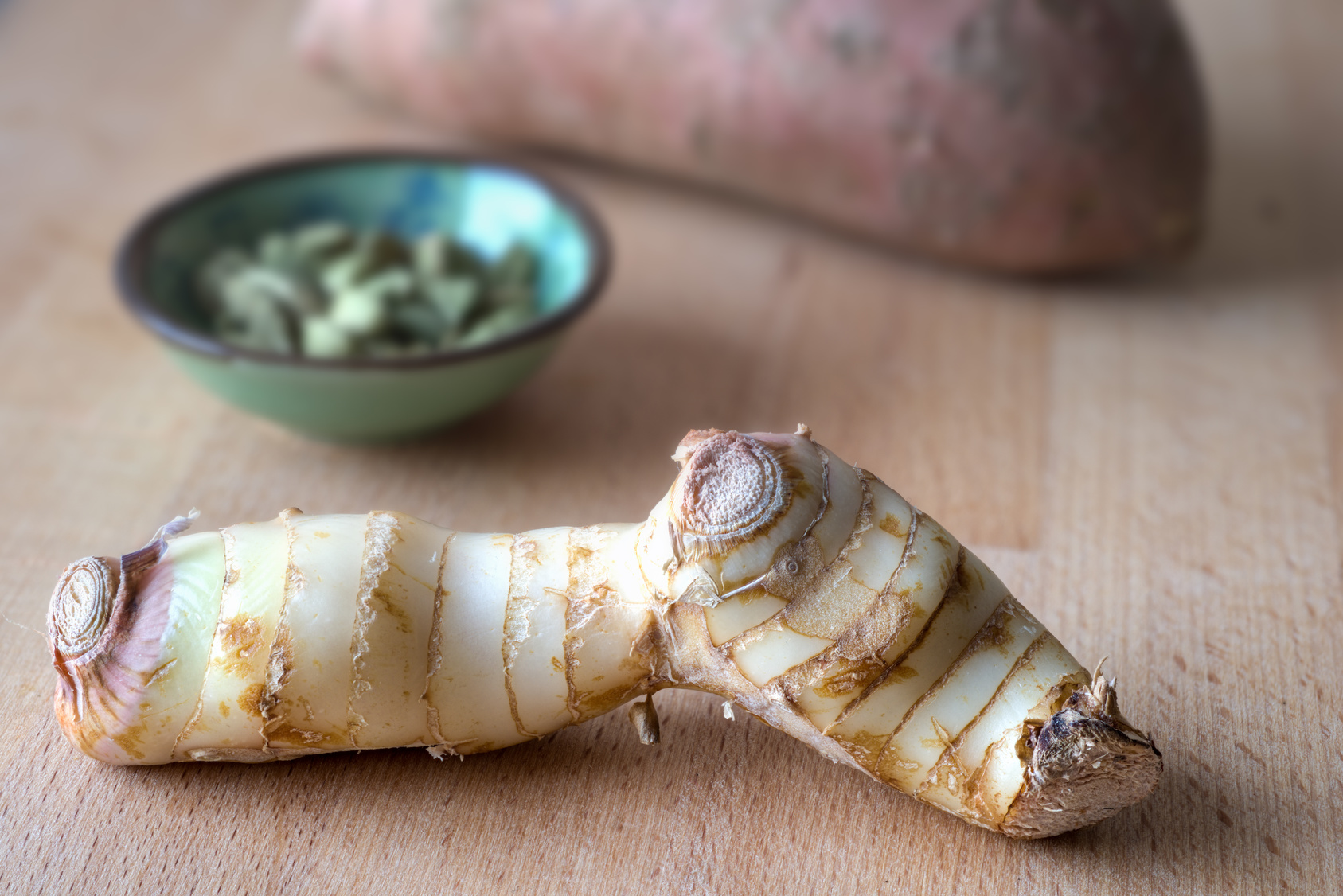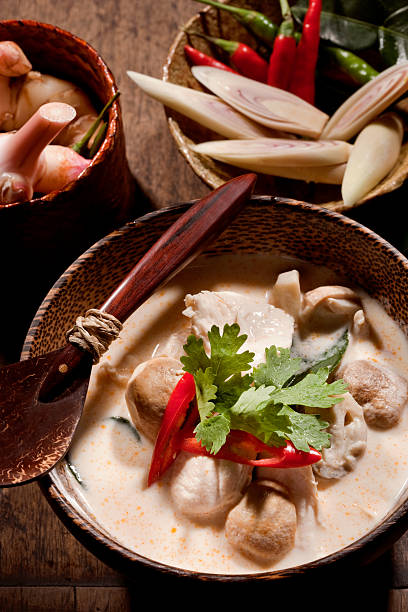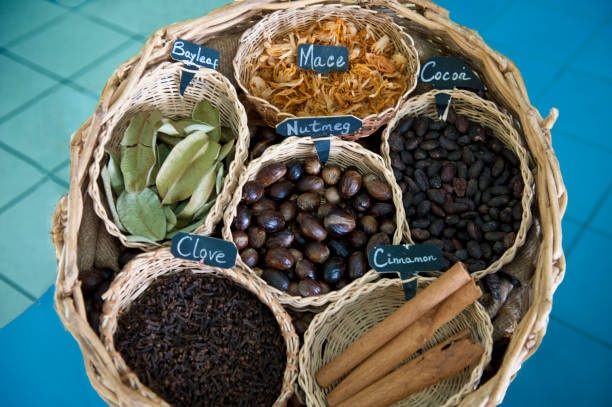

Thai Chicken Soup
Fragrant, slightly spicy, and easily mistaken in appearance for ginger – galangal is a root native to Indonesia and is used in a variety of Asian dishes. Despite its popularity in Asian cuisine, this root is not always easy to find. Let’s take a look at its flavor profile, how to prepare and use it, and what to do if you can’t find galangal for your recipe.
Flavor Profile
Described as zingy and herby, galangal has a flavor you might not be able to put your finger on – though if you’re a fan of Thai cuisine, you may recognize it. A plant from the ginger family, this root brings a warmth to dishes. The most popular kind is called Laos, or ‘lesser’, galangal and it is this root which has that familiar peppery, citrusy flavor – most notably in south-east Asian cuisine. Think Thai soups, Vietnamese stews, and coconut-noted Indonesian dishes.
How to Prepare for Use in Dishes
Paler and more woody than the ginger root you’ve undoubtedly seen in your average supermarket, galangal has an almost ivory-colored flesh. Its overall appearance is similar to ginger, so when shopping in an Asian supermarket, be sure to choose the right root for your dish.
Most Western-style recipes call for the root in its raw state, which offers the most pungency and releases the greatest amount of flavor into a dish. When preparing the root for use raw, follow a similar method to ginger prep – peel the skin away and finely chop or mince the flesh until you have the desired amount ready.
Galangal can be a little difficult to grate, so it can also be sliced or added to a soup or stew in chunks to cook slowly, releasing flavor over a period of time. It is necessary to remove the chunks after cooking has finished, as the root takes on a fibrous and inedible quality.
If you cannot find fresh galangal, check for the powdered version instead. Powdered will last considerably longer as well, if you don’t cook Asian-style cuisine regularly. When peeled, the fresh root can be stored in the fridge for two to three weeks wrapped in plastic wrap or in a paper bag. Whole, unpeeled root can be wrapped in foil and frozen for up to two months.
What to Use as a Substitute
If you do not have an Asian supermarket or even a good international section at your regular grocery store, finding fresh or powdered galangal can be a challenge. While it is very similar in looks to ginger, the flavor profile is different – but in a pinch, fresh ginger can be used as a suitable substitute.
Considering the citrus notes in galangal, it is important to replace this particular flavor if you want to achieve an authentic taste without using the root itself. Lemongrass is a popular substitute, and when used in conjunction with ginger, provides a remarkably accurate flavor profile mimicking the base flavor. If you are without lemongrass, adding a little lemon juice or a kaffir lime leaf will provide the citrus notes you’re looking for.

In terms of quantities, it is best to substitute ginger at a ratio of 1:1 to create the right taste. Regular tasting while cooking will ensure the correct amount is added, as well as with the citrus component.

If you are really struggling to find ginger as well, you can try a combination of cinnamon and mace. While neither of these spices is related to the galangal root, they offer some of the same flavors. Cinnamon offers the peppery notes, while mace provides a spiciness which also includes a delicate citrus flavor.

Which Dishes is Galangal Best in?
Some Asian cuisine fanatics would tell you that galangal is essential to this kind of cooking, as much as coconut milk and lemongrass are. The root is most often used in dishes with a strong coconut flavor, such as Thai coconut chicken soup, or Indonesian curries. It’s also a very popular addition to noodle dishes and stir fry, bringing a classic taste of south-east Asia with every bite!















Leave a Comment